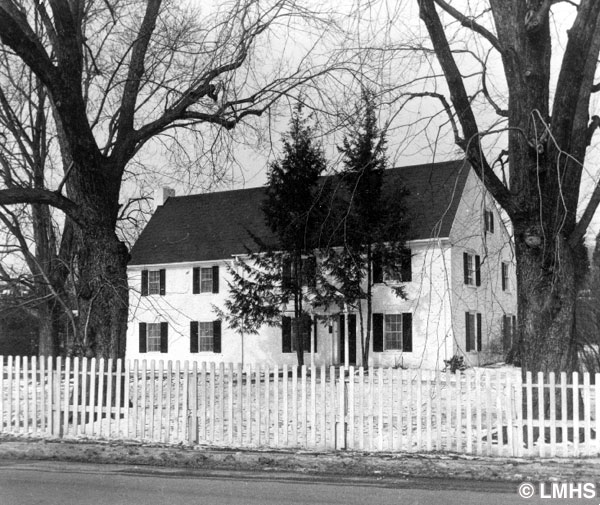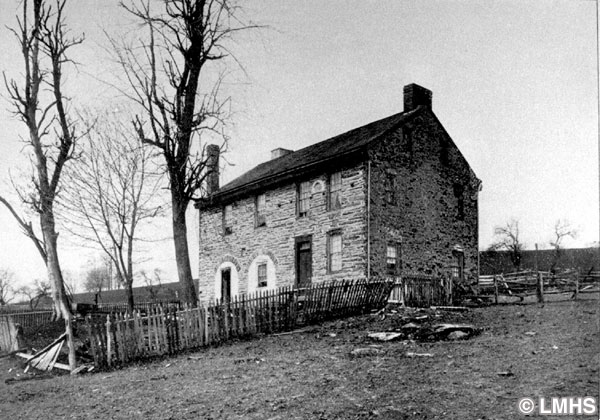The Llewellyn Homesteads
Castle Bith
Morris Llewellyn (1645-1730), a Welshman from the parish of Castle Booth, purchased 500 acres from William Penn while still in Wales. He, his wife, Ann, and their three children came to Pennsylvania in 1682, a year before Penn. Like many Welshmen,the Llewellyns left their native land on account of their firm Quaker principles. Having claimed their acreage, Morris and Ann built their first shelter (probably a log cabin), cleared the land and began establishing a farm and their livelihood. They were active particpants in Haverford Friends’ Meeting and other civic affairs.
Once their farm was organized, they went about planning a permanent house. Started a year after their arrival, they built a two and a half story stone dwelling and named it Castle Bith after Morris’ birthplace in Wales. The homestead sat amidst 150 acres of working farmland and was probably completed in 1699.
Their son, David Llewellyn I, a farmer and surveyor, inherited the home at age 36 and followed the simple agricultural life characteristic of this rural community. He sold the house and two tracts of land to his son, David Llewellyn II (age 19) who kept it for 63 years, until his death in 1794 at 82.

For many years, the home passed through the large Llewellyn clan. William (a son of David II) was an active man; his years at Castle Bith were a time of change and vitality. New machinery and farm equipment increased production and added to the success of their agribusiness. They enlarged the home; extended the house in the back, added one room to each floor and built a huge springhouse (which was later attached to the main house). Subsequent renovations over time have obscured many of the home’s original architectural features.
Llewellyn House

Morris Llewellyn, Jr., upon coming of age in the early 1700s, received 400 acres in another area of the Township (now Gladwyne). Called Indian Fields, it was the site of an Indian village at the bend of the Schuylkill River. An agricultural people, they raised corn and beans for their staple diet. Morris Jr. built himself a dwelling of rough flint rocks gathered from nearby fields. Date stones of 1716, 1750 and 1939 indicated the additions to the house over the years. It had been named Inspiration Farm and Stonehearth by various owners. The home survives (today it is white stucco) along a bend on Conshohocken State Road.
The Llewellyn Insurrection

Another Llewellyn…probably the great-grandson of the first Morris, of Haverford… rose to local fame. A family history, published in 1935, states: “At the close of the administration of President John Adams [1796-1801], a liberty pole was raised at a small village about ten miles north of Philadelphia, then known as Merion Square. A flag was suspended from it bearing the inscription: ‘Down with all tyrants. No gag laws. Liberty or death.’ Among the protestants were Captain John Young, Samuel Young and Morris Llewellyn, all from the original Morris family. Word reached the city that the citizens of Lower Merion had planted on their soil the emblem of Liberty and Equality, a squad of troops was sent out to enforce the Sedition Act. Morris Llewellyn was arrested, taken to the city and put in prison. A great crowd attended his trial and promised to attempt his rescue, should he be convicted. But the jury declared him not guilty. He was carried from the court house upon the shoulders of cheering friends. The other parties implicated in the affair are reported to have fled ‘to the woods and caves of the Schuylkill hills,’ and thus avoided arrest.”
